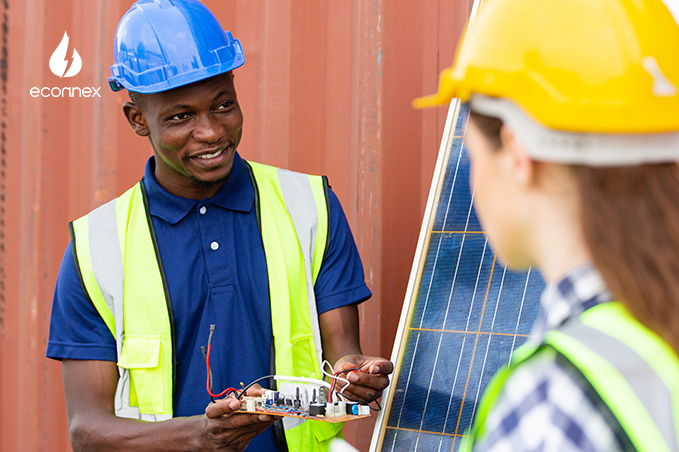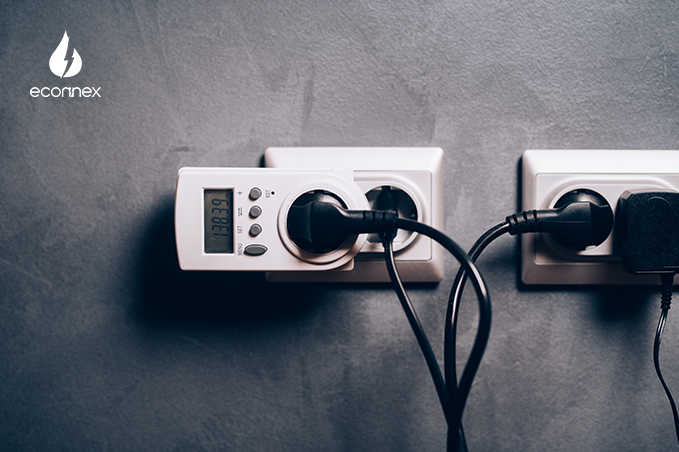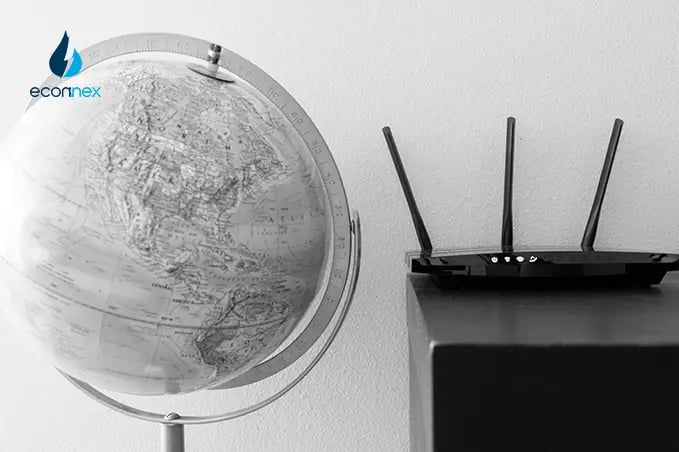Discover the key components of a home solar system and learn how Econnex streamlines installation. Harness solar power effortlessly with our innovative solutions.

Published on 10/01/2024
By William Walton
Solar Comparison
Home solar systems are changing how Australian consumers generate and access renewable energy. These systems allow homeowners to tap into the clean, inexhaustible power of the sun and offer a way to reduce carbon footprints and electricity bills simultaneously.
In this guide, we delve into the components of a home solar system and explore how Econnex streamlines the process of selecting suitable solar packages and installers from our panel.
Understanding how a home solar system works and its essential components is critical to embracing this green technology. The more you know about the components of solar energy systems, the easier it is to align your chosen solution with your household’s electricity requirements.
The racking system is the unsung hero of solar panel installations, providing a sturdy foundation for your solar panels. Whether mounted on your roof or the ground, these structures are engineered to withstand diverse weather conditions, ensuring the durability and safety of your solar investment. High-quality racking, like the corrosion-resistant and cyclone-rated varieties, is crucial for the longevity of your system.
The inverter is a pivotal component, transforming your solar panels' direct current (DC) electricity into alternating current (AC) electricity, the type used in your home and the electrical grid. Inverters come in various types, including string inverters and microinverters, each offering unique benefits depending on your system's needs. Their efficiency, often exceeding 95%, is a testament to the technological advancements in solar energy conversion.
The network of wires and cables in a home solar system is like the human body's circulatory system, essential for transporting electricity to where it is needed. These components connect the solar panels, inverter, and other system parts, ensuring the generated electricity reaches its destination with minimal loss.
Safety is non-negotiable in electrical systems, including home solar systems. Components like switches, isolators, and circuit breakers are vital for maintaining safety standards. They provide a means to shut down the solar system for maintenance or emergencies, safeguarding against electrical accidents and ensuring smooth operation.
Incorporating a battery charger, often integrated into hybrid inverters, is a forward-thinking move for those opting for energy storage. It manages the charging and discharging of batteries, storing excess energy for use during low sunlight periods. The efficiency of these chargers can significantly impact the speed and effectiveness of energy storage.
How many kwh does a solar battery hold
Batteries, though optional, are a game-changer for enhancing energy independence (although they can come at a significant upfront cost). They store surplus energy for later use, reducing grid reliance and providing backup power during outages. Modern solar systems often use lithium-ion batteries, known for their efficiency and compact size.
Modern solar systems offer sophisticated monitoring and control mechanisms. These systems, often accessible via smartphone apps and web interfaces, provide real-time data on your solar panels' output and the overall health of your system, empowering you with information and control.
Optimisers are specialised components that boost the efficiency of your solar system, especially in situations with shading or panel orientation challenges. They optimise the output of each panel, maximising energy production and often include panel-level monitoring for detailed performance insights.
A well-maintained solar system not only ensures optimal performance but also extends the lifespan of your investment. Like any significant investment, such as a car, your solar system requires regular maintenance to function efficiently and safely.
Solar panels, living outside and exposed to all weather conditions, can experience wear and tear. Elements like the DC isolator casing can deteriorate over time, potentially leading to safety hazards like fire risks. Regular maintenance helps identify and rectify such issues early, keeping your system in top condition.
Check - How do Solar Panels Work?
It's advised to service your solar panels at least once every two years. However, if any issues arise, additional one-off inspections may be necessary. This routine ensures that your system operates efficiently and safely.
A typical maintenance schedule provided by your solar retailer or installer will include:
Maintenance should be carried out by a licensed electrician, preferably accredited by the Clean Energy Council. This ensures that the service is performed safely and effectively. Be cautious of 'solar cleaners' or similar services that may offer cheaper rates but could pose safety risks or void your warranty.
While cleaning involves removing debris from your panels, servicing is more comprehensive, including electrical testing and thorough inspections. Engaging experts for servicing is crucial, especially if you notice any physical damage to the system.
With a firm grasp of the components of a home solar system, you’ll be better positioned to pick the right fit from the Econnex solar comparison platform. There are no ads, sponsored products, or third-party links; you pick the product you think is the best, and we’ll handle the paperwork.
With Econnex at your side, you can access:
A home solar system comprises various essential components that collectively harness the sun's clean, renewable energy. Econnex simplifies the journey to solar energy, making the selection of components, installers, and solar packages efficient and user-friendly. Embrace a sustainable and cost-effective energy future with Econnex's comprehensive online platform.



